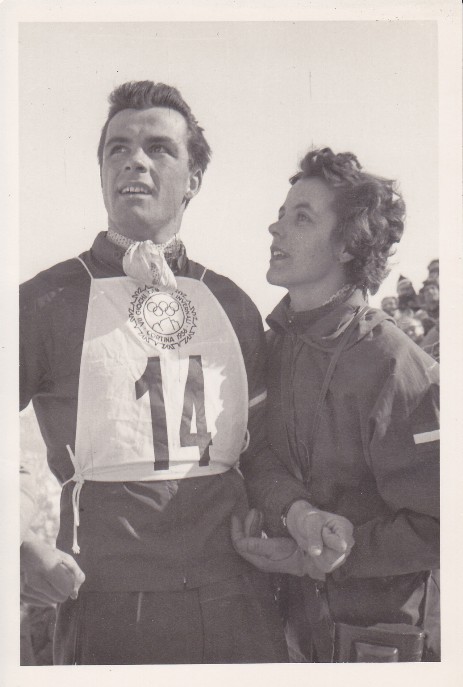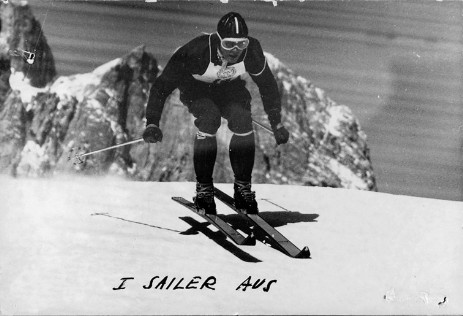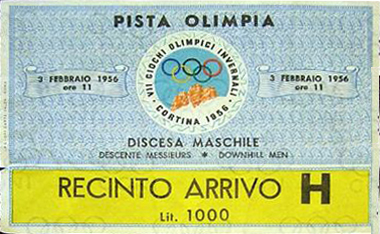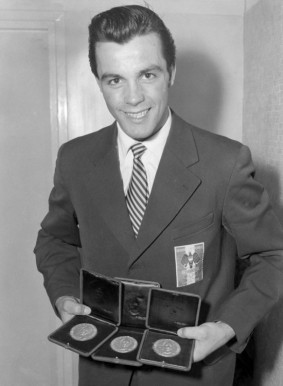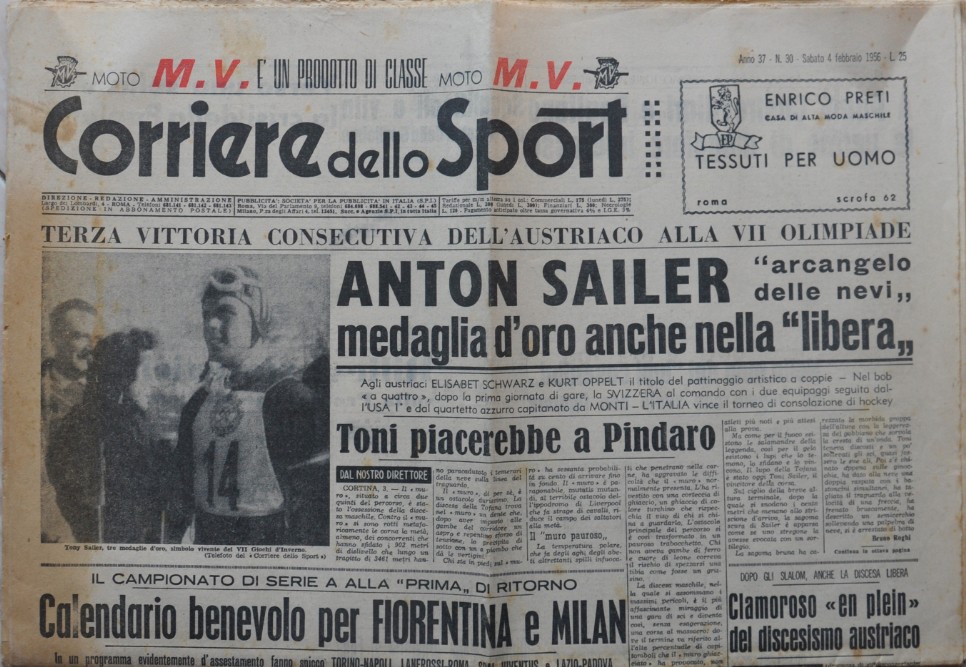Maschile
CORTINA 1956 > LE GARE > Sci Alpino
SCI ALPINO - ALPINE SKIING
MASCHILE - MEN
Il clou del programma di gare è rappresentato dallo sci alpino, sport più praticato tra le Alpi rispetto a quello nordico, e proprio da queste prove emerse il nome del campione più acclamato di Cortina ‘56: Anton "Toni" Sailer. Il polivalente atleta austriaco si rese protagonista di un’impresa leggendaria, aggiudicandosi in maniera inequivocabile e talvolta esemplare tutte e tre le prove (slalom, gigante e discesa) a cui era iscritto. Tra le porte larghe dello slalom gigante e le distese bianche della discesa libera, Sailer non ha rivali: vince e infligge distacchi abissali, rispettivamente di 6,2 e 3,5 secondi, ai malcapitati atleti che giungono alle sue spalle, ma è tra i pali stretti dello slalom speciale che l’austriaco compie un’impresa ancor più incredibile.
The highlight of the competition program was represented by alpine skiing, which is more popular in the Alps than Nordic skiing, and it was from these trials that the name of the most acclaimed champion of Cortina '56 emerged: Anton "Toni" Sailer. The versatile Austrian athlete was the protagonist of a legendary feat, winning in an unequivocal and sometimes exemplary way all three events (slalom, giant and downhill) in which he was entered. Between the wide gates of the giant slalom and the white expanses of the downhill, Sailer has no rivals: he wins and inflicts abysmal gaps, respectively of 6.2 and 3.5 seconds, on the unfortunate athletes who arrive behind him, but it is between the narrow poles of the special slalom that the Austrian accomplishes an even more incredible feat.
La prima gara di Sci Alpino fu quella dello Slalom Gigante maschile, che si svolse sulla pista Ilio Colli sul Monte Faloria, che domina la città di Cortina.
The men’s giant slalom was held on Monte Faloria (Ilio Colli track), which overlooked the town of Cortina.
Slalom Gigante Maschile - Giant Slalom man
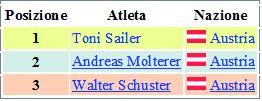
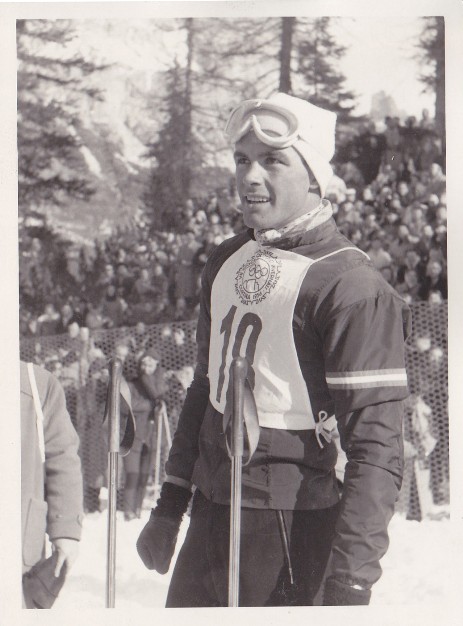
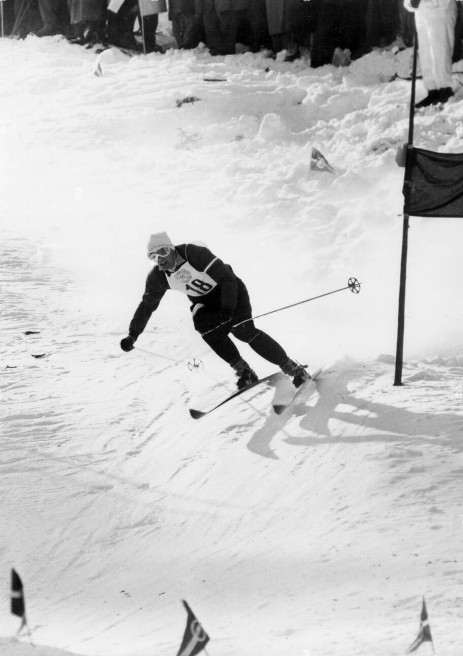
Sulla pista Ilio Colli si presentarono 87 partenti di 29 Paesi diversi. La temperatura massima era di tre gradi sotto zero, quella minima di otto. Il primo a partire fu lo statunitense Ralph Miller, mentre il favorito della gara, il ventunenne di Kitzbühel Anton “Toni” Sailer, partì con il numero 18. E stravinse. Giunge al traguardo con sei secondi e due decimi di vantaggio sul connazionale Andreas Molterer e sette su Walter Schuster, anche lui austriaco.
On the Ilio Colli track there were 87 participants from 29 different countries. The maximum temperature was three degrees below zero, the minimum eight. The first to start was the American Ralph Miller, while the favorite of the race, 21-year-old Anton "Toni" Sailer from Kitzbühel, started with number 18. And he won hands down. He reached the finish line six seconds and two tenths ahead of his compatriot Andreas Molterer and seven ahead of Walter Schuster, also Austrian.
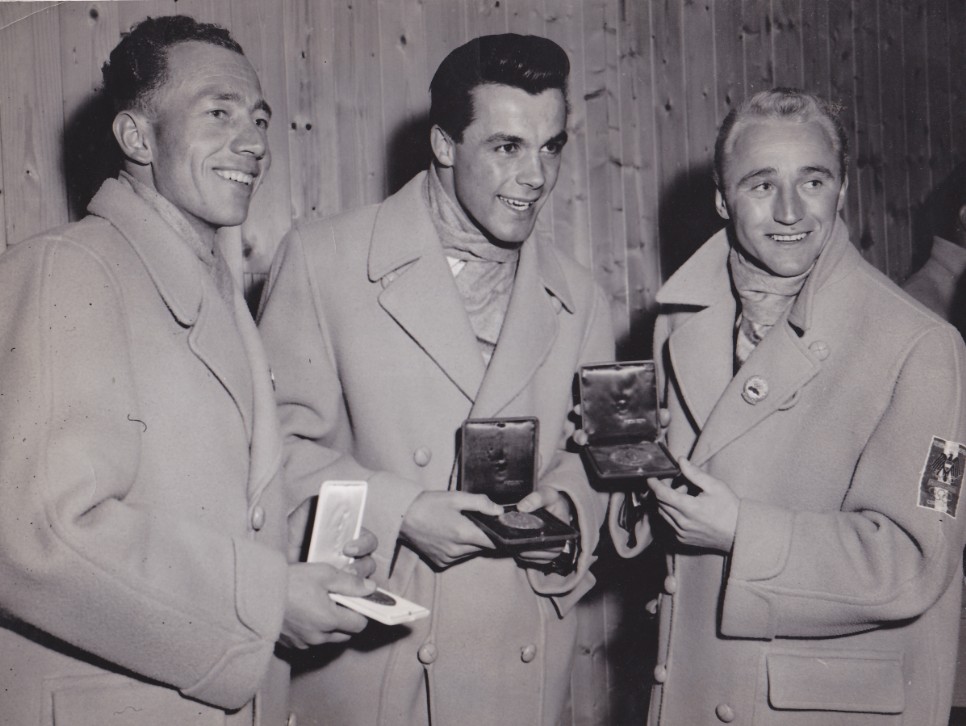
Slalom Gigante Maschile - Giant Slalom man
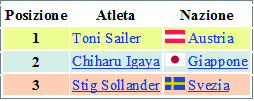
Due giorni dopo, su una pista diversa, la “Col Drusciè”, si disputò la gara di Slalom speciale maschile. Cambiava la disciplina, cambiarono le condizioni meteo, si corse su due manches, ma il risultato fu lo stesso lo stesso: vinse Toni Sailer (nonostante fosse giunto in ritardo e senza il suo pettorale, dimenticato in albergo), precedendo di quattro secondi il giapponese Chiharu Igaya e di cinque e mezzo lo svedese Stig Sollander. Primo degli italiani fu Guido Ghedina, diciassettesimo, a ventisei secondi.
Two days later, on a different slope, the "Col Drusciè", the men's Special Slalom race was held. The discipline changed, the weather conditions changed, the race was run in two heats, but the result was the same: Toni Sailer won (despite having arrived late and without his bib, forgotten at the hotel), four seconds ahead of the Japanese Chiharu Igaya and five and a half ahead of the Swedish Stig Sollander. First of the Italians was Guido Ghedina, seventeenth, at twenty-six seconds.
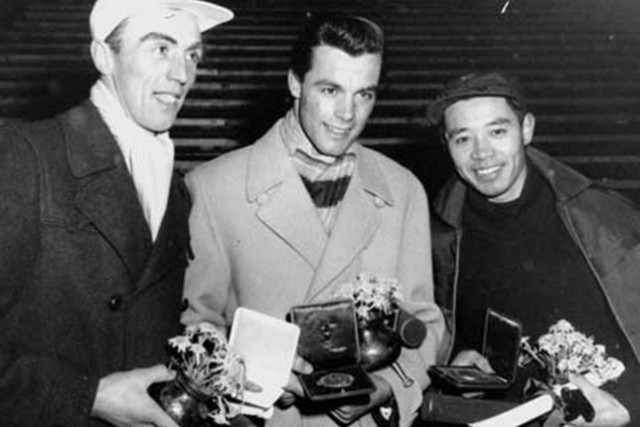
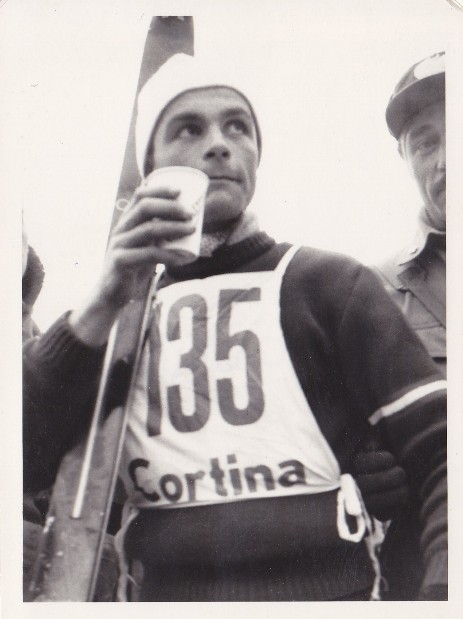
Il 3 febbraio si tenne l’ultima gara di sci alpino, la più attesa: la discesa libera maschile. Si partiva da 2.282 metri e si arrivava a 1.380, quindici porte per quasi tre chilometri e mezzo di percorso. Toni Sailer aveva il pettorale 14 e la solita tuta “all black”. Pochi minuti prima della partenza gli saltò uno dei legacci di cuoio che fissavano gli scarponi agli attacchi, lo cambiò appena in tempo e sembrava andare tutto per il meglio. Poco prima del traguardo, però, gli si aprì la soletta di uno sci. Il risultato? Vinse con tre secondi e mezzo di vantaggio sullo svizzero Raymond Fellay e quattro sul connazionale Molterer. Per lo sciatore di Kitzbühel fu un trionfo, tre vittorie in tutte e tre le gare di sci alpino, il “fulmine nero” diventa “il re di Cortina“.
Discesa Maschile - Downhill man
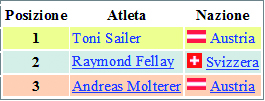
On February 3 the last alpine ski race was held, the most awaited one: the men's downhill. It started from 2.282 meters and arrived at 1.380, fifteen gates for almost three and a half kilometers. Toni Sailer was wearing bib number 14 and the usual "all black" suit. A few minutes before the start, one of the leather straps securing his boots to the bindings blew off, he changed it just in time and everything seemed to be going well. Just before the finish line, however, the base of one of his skis opened. The result? He won by three and a half seconds over the Swiss Raymond Fellay and four seconds over his compatriot Molterer. For the skier from Kitzbühel it was a triumph, three victories in all three alpine ski races, the "black lightning" became "the king of Cortina".
